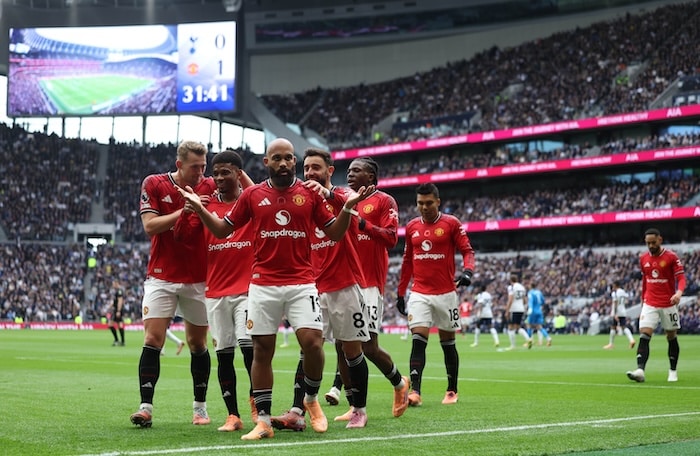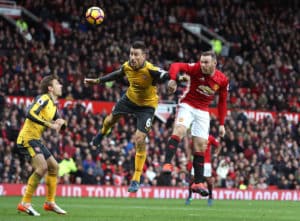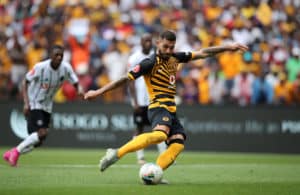The last few seasons have contained plenty of low moments for Manchester United. How do they bounce back? Ask Mark Gleeson.
Not since José Mourinho proclaimed himself “The Special One” has there been a quote as memorable as Ruben Amorim’s discourse on his Manchester United players earlier this season.
“Sometimes I hate my players, sometimes I want to quit, sometimes I hate my kids!” he told the media after Manchester United’s sensational League Cup loss to lowly Grimsby back near the start of the new campaign.
It was yet another extraordinary reversal for a club who spent heavily in the off-season in a bid to turn around their fortunes but who are still struggling to restore lost lustre.
It has now been more than a decade since their last Premier League title in 2013, the 20th in club history.
Such was their dominance in that campaign that Alex Ferguson’s side finished 11 points ahead of runners-up Manchester City.
The title was secured with four games to spare and prompted then England manager Roy Hodgson to declare that Ferguson was a “magician” having won 13 titles in 21 seasons.
It was then that the legendary manager announced his retirement; his final game in charge was away to West Bromwich Albion on the final day of the season, which ended in a 5–5 draw.
Since Ferguson’s departure, there have been six permanent appointments, all brought in with high expectations to try and keep the club at the top.
Louis van Gaal had won championships in Germany and Spain but only an FA Cup with the Red Devils.
Mourinho was not special at all at Old Trafford and Erik ten Hag intense and focused but without charisma and conviction.
Amorim was brought in last season when Ten Hag was fired, and on the back of success at Sporting Lisbon, but from the outset was on the back foot as Man United plunged to new depths, finishing 15th in the Premier League season – even if they did reach the Europa League final.
A year ago Amorim was one of the most coveted and highly rated young managers in Europe; he was on Liverpool’s shortlist of potential successors to Jürgen Klopp, but Arne Slot got the job instead as Liverpool balked at the predicted cost – £400 million – of building a team to Amorim’s specification.
Now, there are questions over his playing style although Amorim is not as doctrinal as widely claimed.
While he is in a minority of coaches that always use three defenders and two wingbacks, he regularly makes opposition-dependent tweaks and cannot be accused of sticking to a single plan, evidenced in the number of times Amorim has changed his starting XI.
But during the Portuguese tenure, United have consistently found it difficult to turn his game plan into success on the pitch.
They spent £200 million on new signings before the start of the season and initiated a large squad overhaul but while aiming to get the better of opponents by using overloads across the pitch, Amorim’s midfield is a mess as Fulham’s Nigeria international Alex Iwobi explained after they exposed them early in the season.
“We knew that we would be able to get behind their two midfielders and that their centre-backs would want to jump, we exploited that today,” he said after the 1–1 draw at Craven Cottage.
Whether a coach should build a system to suit their players or construct a predetermined system and ask the players to adapt is a matter with which many coaches contend.
However, Amorim’s brief at United is to construct a team capable of winning the league by 2028, he has little choice but to play with a game model of controlling matches.
However, the efficacy of that style depends on possessing players that can execute it.
Yet United’s squad is imbalanced and the simple truth about the Premier League, which is more intense than Europe’s leading leagues, is that few teams can cope without a functioning midfield, and it determines a team’s ability to effectively impose their style.
For example, Manchester City endured their worst season under Pep Guardiola when Rodri suffered a season-ending knee injury last year.
Without sufficient midfield quality, the system fell apart. Three seasons ago, Klopp’s Liverpool, after a campaign in which they chased an unprecedented quadruple, were ruthlessly exposed by Premier League opponents.
Their midfield, consisting of ageing and attacking players that were neither strong nor fast enough to deal with the rigours of the league, was ripped through.
A tactical tweak towards the end of the season helped remedy some issues, but only when they recruited dynamic midfielders did they become a force again.
Herein lies the biggest and most obvious problem at United: recruitment.
Managers and their influence on teams are somewhat overrated, as are their tactics.
They are important factors but secondary considerations as, fundamentally, the quality of available players is the single biggest determinant of success.
Until recent appointments, United’s recruitment department was regarded, internally, as a decade behind industry leaders such as Liverpool, who use a variety of custom metrics, one of which is “pitch control”, developed by their head of research, Will Spearman.
As Liverpool’s former director of research, Ian Graham, explains: “If you can reach a given location on the pitch before anyone else, then you control it.”
Yet United’s midfield is slow. Systems and formations cannot accommodate for a lack of speed, physicality, or discipline in midfield, especially in the Premier League: Casemiro has struggled with its pace; Manuel Ugarte lacks the technical skill to anchor; and none of Bruno Fernandes, Kobbie Mainoo, or Mason Mount are deep midfielders.
Tactics and Amorim cannot change the fact that United’s squad, specifically their midfield, is not dynamic enough to compete at the top end of the Premier League.





